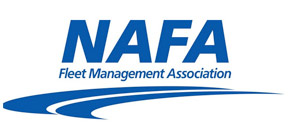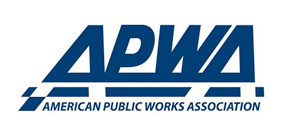Lynchburg officials discuss longtime downtown improvement project

Several officials of the city of Lynchburg, Va., including Project Manager Scott Parkins, Director of Water Resources Timothy Mitchell, Project Manager Public Works Cheree Taylor, Communications Manager Jason Snyder and Assistant Director of Public Engagement and Communications Susan Brown, gathered virtually to speak to The Municipalabout their ongoing downtown improvement project.
Parkins explained how it all started when he joined the city. “We recognized about 15 years ago the age of the infrastructure downtown — the older areas — are over 100 years old. The typical lifespan of cast-iron water lines is about 100 years. We knew the longer we pushed it, the more likely it was going to cause problems and breaks, making us go down there several times in an area that is not the easiest to fix breaks.”
Parkins said around 2010, the city contracted with an engineering firm to do a preliminary engineering report to come up with a plan to start replacing the infrastructure in phases. When they presented the PER to the city managers and city council, Parkins said, “It got the discussion rolling. If we’re making improvements for the utility infrastructure, we need to partner with other city departments and try to put a nice product back in place. So, it started with utilities and then became a driving force of how to draw people downtown and make it a commercial and entertainment venue.”
The first project coincided with two large private projects that were taking place in downtown Lynchburg: The Academy of Arts Theatre project and the renovation of the Virginian Hotel in 2016.
“We knew these private organizations were pushing a lot of money into these projects so we felt we needed to put the public work in and get the utilities and streetscape done first, so it became a large partnership so these projects could move forward in a timely manner,” Parkins said.
The project is currently in Phase IV of what is expected to be an eight-phase project, with the total estimated cost to be over $80 million. Currently, the price tag for the first four phases has been approximately $37.7 million, and the expected remaining phases will cost about $40-$50 million. Local funds have almost entirely paid for the project. When asked if the city received any State Revolving Funds to remove lead, the officials noted the project was started before the Lead and Copper Rule really kicked in.
Cheree Taylor, project manager for public works, said there were some Community Development Block Fund Grants in the early phases, “but it was very minimal.”
Director of Water Resources Timothy Mitchell said workers found very few lead services, and the project has been funded with local water services and general funds. Mitchell said the city also moved Phase III of the project up to Phase II, in order to partner with American Electric Power because they needed to renew the electric infrastructure and wanted to do their work on Main Street, so Lynchburg officials moved that section of Main Street to Phase II.

“We’ve adjusted phases based on what was happening downtown at the time,” Mitchell said. “I think that’s been part of the success of the program, being flexible and moving phases around, giving businesses a break at times and taking advantage of other things going on at the same time.”
Phase I on Main Street cost $8.5 million, phase II cost $9.2 million and phase III, which was half of Commerce Street between Fifth and Ninth streets, cost $8.5 million. Parkins said each phase has had streetscape done. First, workers dig everything up, replace the utilities and follow up with improvements to sidewalks, crosswalks, paving and add amenities like benches and trees.
The city is currently about six months into Phase IV, which is estimated to cost $11.5 million, and will complete Main Street from Fifth Street to the expressway. Parkins said Main Street has been a part of Phase I, II and now IV.
Communication is critical
Mitchell said a very important aspect of the project has been communication. “Communicating how the work was being done, ensuring that we’re leaving access to the businesses and whether that means access by sidewalks or parking. Throughout the entire project, how we’re engaging with businesses has helped.”
Snyder shared the city only contracted out communications to a public relations firm in the early phases, and now the Downtown Lynchburg Association, a nonprofit organization with a mission to help revitalize downtown, has taken over. He said, for example, Lynchburg will do a lot of work near the community market, and DLA is helping address a lot of questions that arise about what parking will be available, etc.
Brown is in the unique position of previously working with DLA during the second phase on Main Street, and now that she’s working with the city, she said, “I’ve been really pleased to see the city’s dedication and commitment to the businesses downtown, and they recognize the impact and want to help.”
Brown said DLA has been great at communicating with the public and encouraging them to support local businesses. She added the way the city has approached changing phases and accommodating downtown resulted in reverting several one-way streets back to two-way streets as an attempt to get the general public on board and alleviate pressure on a particular street and make them more accessible.
Challenges
Mitchell said while getting more access to downtown and making the streets two-way again helped business growth and resident growth downtown, improved traffic flow and made downtown more pedestrian friendly, “that also creates other challenges. When we started the project, there weren’t as many people or businesses downtown. So with success, each subsequent phase has been harder trying to minimize the impact.”
Parkins spoke about challenges encountered during construction, saying the number one challenge is dealing with unknowns.
“We’re digging into city streets that haven’t been touched in 100 years. Mapping in the early 1900s was not ideal and what private utilities put in the ground wasn’t ideal,” he said, explaining workers have found old, abandoned water services and old AEP power vaults.

“We can design to the best of our abilities, but once the contractor digs underground and finds something, we’re constantly going back to the designer to adjust the design around the obstacle,” Parkins said.
He shared with this current phase, the very first week workers uncovered an old AEP vault that looked like it was from back in the trolly system days, but it was poured right next to a 16-inch water line Lynchburg was going to replace. They weren’t sure if the joints on the water line would hold up while they were trying to remove the vault. So, they had to remove pressure from the old line first before abandoning the line, which meant going back to the engineer’s contract. All of this work was not on the original schedule.
“So, we may go out to the community and say we’re going to be working in a certain area for six weeks and then right off the bat, we spent two weeks working on something we didn’t know about, putting us behind,” he said.
Parkins noted people watching the work going on outside their door “aren’t engineers; they don’t understand all it takes and that things change at a moment’s notice. They just see dust and hear noise and that they’re not able to use the sidewalk.”
Change orders also affect the council as members look at costs. Parkins said, “They want to make sure they’re spending the city’s money wisely and to benefit everyone, not just downtown.”
When asked about the public’s response so far, Parkins said, “A couple of people do recognize what’s happening and are happy even though it causes disruptions; others just need to vent. When all is said and done, everyone in the finished parts of the project is very happy and has been very positive.”
Brown shared one story she was aware of when she was helping during Phase II. She said a woman purchased a building in the project zone and planned to have a storefront on the main level, living quarters on the second floor and planned to just use the third floor for storage as there wasn’t enough water pressure up there. Once the project was completed, she could use the third floor because there was now better water infrastructure and pressure.
“So more than just pretty sidewalks — there’s a lot of positive ramifications from having better and newer infrastructure,” she said.
Taylor said part of the planning phases has been outreach to any future private sector developers and utility companies, and the city received positive responses from that. Taylor shared that streetscapes could be planned around future development, to some extent.
Parkins said that it also includes getting people the right size service. He said officials have been asked by several companies that knew they’d be expanding in the near future and wanted a larger size line.
“It’ll save us and them time and effort,” he said.

The city officials were asked if they encountered any difficulties with switching phases that were pre-planned.
Taylor responded, “I think the way we laid out our timeline beginning to end, we could easily flow from the completion of one project to beginning another. For example, as we were under construction in Phase I, we were beginning the design work for Phase II. We’ve had continuous movement of construction and have been able to consider moving areas around.”
She said the goal was to complete Main Street in this phase and then move to Court Street in the next to give a little relief to Main, Church and Commerce streets before moving back to Commerce.
Parkins added it’s also been easier to build off newer infrastructure. He said the city replaced infrastructure on Fifth Street 10-15 years ago, which gave them a brand-new pipe to start working from. Workers have been able to work off new pipe since then.
As far as how budget considerations affected their ability to switch phases, Mitchell said, “Budget is always a challenge and is always limited. That’s another reason for the next phase as it will have less of an impact on the general fund. So, we shifted to Court Street. Budget certainly does play a part in the decision-making process.”
Future plans
Parkins said they have about 18 months left in the current phase, making them about half-way through. He said the city has initiated a new phase every three years — one year for design and two years for construction. Based on that, he believes it’ll be eight to 10 years before the city is done. He shared that every year Lynchburg has to do a five-year Capital Improvement Project plan, and the future projects are included in that plan.
Mitchell said the schedule for construction is dependent on the availability of funds. The project has been funded half from the utility and half from general funds. Parkins said the council is aware that one goal is to replace the old infrastructure.
“We need money to upgrade infrastructure and downtown is the most costly, but everyone has been behind us pushing forward with these efforts.”
He spoke about a major break of a 100-year-old 16-inch main on Commerce Street on a section that was not yet finished and that caused a lot of damage to some new bluff work. It poured all the way down Jefferson Street, creating a big mess. Brown pointed out the topography of the city of Lynchburg, population over 80,000, is a city of seven hills. “So, when he said it poured down, because of the topography, it affects more than just the immediate area.”
Mitchell offered this advice to other municipalities facing such a project. “Plan well in advance, think of businesses and traffic flow and pedestrian flow, prepare to engage with the community and any stakeholders early and often and make them aware of the project, its impact and what’s coming in the future.”
Lynchburg held public meetings before every phase. Parkins and Taylor reiterated having an outside organization handling communication with the public has been huge.
“Outreach to the public is huge — especially with a project of this magnitude. We’ve been blessed to have them on board,” Taylor said.
Next Article: Live-in volunteers help Berkeley Hills Fire Department improve response times


